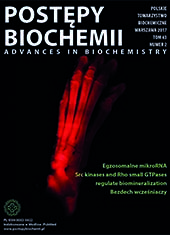Apnea of prematurity â characteristic and treatment
Abstract
Apnea of prematurity (AOP) can affect even 85-100% of premature newborns and is related to lack of full maturity of organs. AOP is manifesting by 15-20 seconds cessations of breathing accompanied by bradycardia and oxygen desaturation, what can lead to hypoxia or death. Therefore it is very important to implement the effective and safe treatment immediately after birth. Widely used caffeine citrate, which stimulates the respiratory system, improving the working of the respiratory muscles. However the metabolism of caffeine citrate is difficult in preterm infants due to the immaturity of the hepatic enzyme system, what can lead to the occurrence of side effects and toxicity. To avoid the toxic effects of caffeine, and at the same time the lack of efficacy associated with administration of too low doses, this therapy should be monitored by measuring the concentration of caffeine in the plasma of treated infants. This would provide the maintenance of therapeutic levels of caffeine and optimization of the treatment.
Downloads
Published
Issue
Section
License
All journal contents are distributed under the Creative Commons Attribution-ShareAlike 4.0 International (CC BY-SA 4.0) license. Everybody may use the content following terms: Attribution — You must give appropriate credit, provide a link to the license, and indicate if changes were made, ShareAlike — If you remix, transform, or build upon the material, you must distribute your contributions under the same license as the original. There are no additional restrictions — You may not apply legal terms or technological measures that legally restrict others from doing anything the license permits.
Copyright for all published papers © stays with the authors.
Copyright for the journal: © Polish Biochemical Society.




